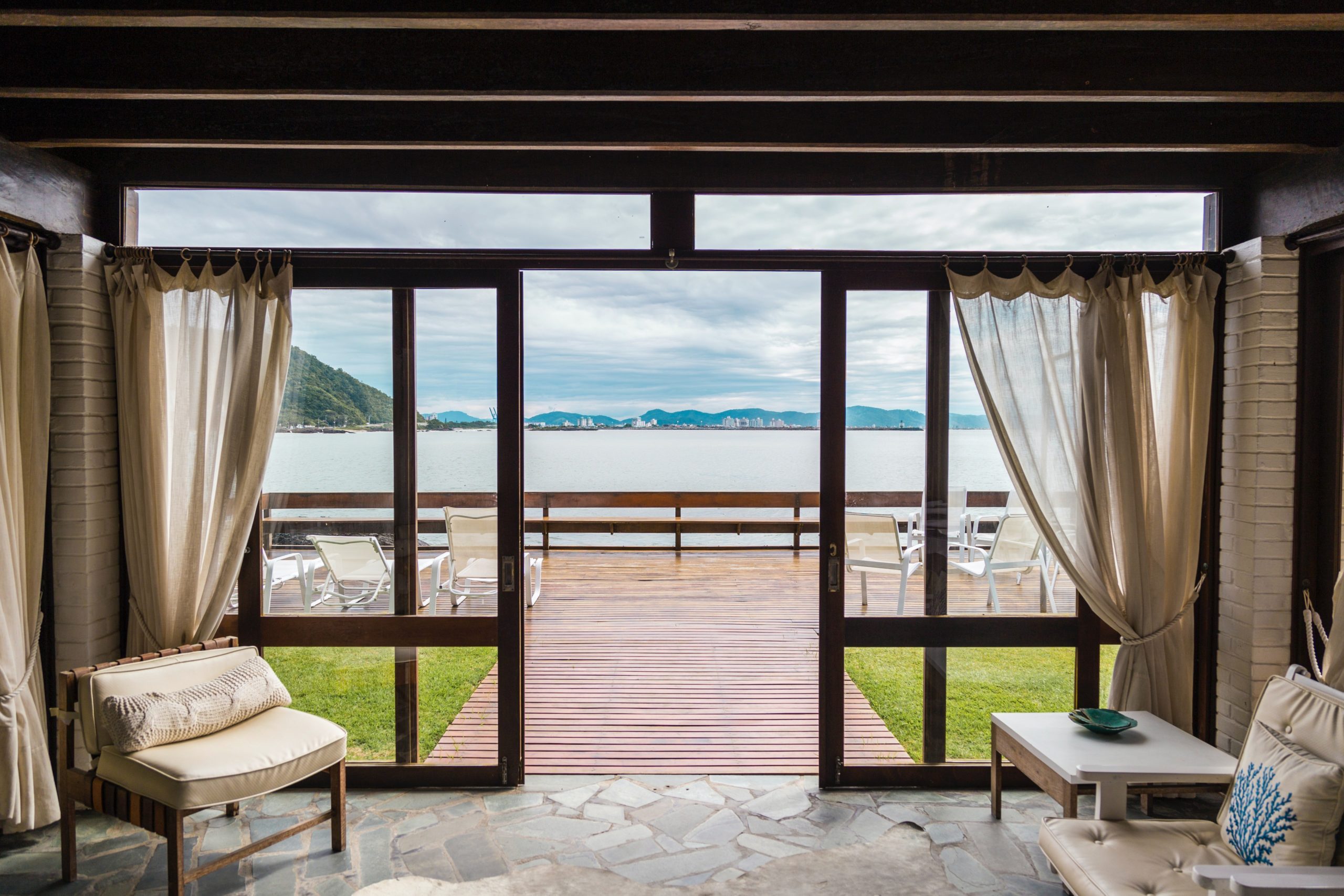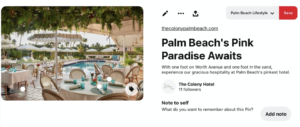How Hotels Should Think About Social Media Advertising

That social media has changed the hospitality marketing landscape is undeniable. As social networks continue to infiltrate every aspect of people’s lives, social media advertising has become a major tool for hospitality marketers to reach travelers in the right place and at the right time.
But social media advertising is not a catchall for hotels. It’s important to understand the social platforms where your target customers are spend time and know who you can reach on each platform. There is no one-size-fits-all approach when it comes to social media advertising — but there are ways hospitality marketers can maximize their budgets across social media channels.
The insights you can gain from social media advertising can be incredible. With access to information like demographics, interests and behaviors, and the ability to retarget travelers who visit your hotel’s website, hoteliers can make smart, data-driven decisions on where and how to spend their hotel’s advertising dollars. By taking advantage of the powerful targeting capabilities of social media platforms, hotels can reach potential guests who are most likely to be interested in their hotel. Utilizing a mix of social media platforms, hoteliers can cast a wide net and attract more travelers to their properties.
Let’s look at what hoteliers should consider and the platforms that can drive bookings.
What hotels should consider before choosing social media platforms
Before diving into all of the social media platforms, hospitality marketers need to have a strategic plan. Spending money on social media advertising without a clear purpose may lead to some bookings, but a thought-out campaign can make a world of difference.
There are three things to consider before choosing specific platforms and ad spends.
- Know your audience. It’s important to know who you’re targeting with your ads so you can utilize optimal social media channels. Regarding audiences, not all social media platforms are created equal. When choosing which social media platforms to target travelers on, it’s essential to consider the demographics of your target audience and what social media platforms they are most likely to use. If you’re looking for business travelers, for example, LinkedIn may provide the best audience targeting. If you want to target millennials and Gen Z, Instagram is a better option.
- Create compelling content that speaks to the traveler’s needs and interests. Think about what might appeal to a prospective traveler. What content might catch their eye on the newsfeed, or what might entice them enough to click on something while they’re on your page? It’s important to consider how various types of content will be received on different platforms. For example, if you want to showcase your hotel’s amenities and surroundings, Instagram Reels is a strong option. Use the video format to give your target audience a little taste of what it is like to be at your property.
- Use data-driven insights to your advantage. Before creating a campaign, hoteliers can utilize website data to inform advertising strategy. What demographics stand out? Are there points of interest that bring people to your hotel’s website? This type of data can help hoteliers hone in on a highly specific target audience and create ads that are more likely to be successful.
By following these tips, hospitality marketers can create social media strategies unique to each platform and can better reach potential guests and increase bookings for your hotel.
Quick Guide to Social Media Channels for Hotels
"*" indicates required fields
4 social platforms to consider for hotel advertising
When creating a social media advertising campaign, it’s important to consider which social platforms your target audience is most likely to use. That’s where the above tips come into play.
But it can be hard to keep up in the ever-changing social media landscape. Hoteliers can utilize different platforms to reach different segments of their ideal target audience. For example, suppose a hotel wants to target younger travelers. In that case, it should pay close attention to social platforms like Instagram and Snap as they are very popular among this group. At the same time, hoteliers mustn’t forget about social networks that may not be as trendy but still offer significant opportunities for reaching potential guests, such as LinkedIn.
Ultimately, a combination of targeting strategy and budget will determine which social media platforms your hotel utilizes. After factoring in pay-per-click, metasearch, and SEO, each hotel will need to determine which social media advertising options make the most sense.
Consider which of these platforms is the best fit for your property:
1. Facebook
Nearing 3 billion active users, Facebook is the world’s most popular social media site. It’s also a great platform to target travelers. Facebook allows hoteliers to target people by demographics such as age, gender, and location, as well as interests and behaviors. They can also target people who have recently interacted with their hotel on Facebook or Instagram, for example, by watching your video or clicking on your website. One of the best reasons to use Facebook is that it can help hotels deliver ads to travelers in real time when they’re on mobile, desktop, and tablet devices. This means people see ads when they’re on their commute home from work, ready to book a vacation, or browsing travel photos.
While Facebook is beginning to skew toward an older audience, its size, and behavior-specific targeting make it a key component of a social media advertising strategy. Not only can hoteliers focus on a specific demographic or location and user interests (e.g., hiking), but Facebook offers some specific options for further targeting. In addition to retargeting hotel website visitors, Facebook provides hoteliers with Trip Consideration and Prospecting target options. These tools use machine learning to help hotels target people who show “intent” to travel based on data the social media platform has from their online habits and actions.
2. Instagram
According to Instagram Business, 90 percent of Instagram users follow at least one business account, while 50 percent said they’re more interested in a brand when they see ads for it. Instagram is an especially powerful channel for hotels targeting millennial and Gen Z travelers as this demographic is more likely to engage with the platform, follow travel brands, and make hotel reservations on their mobile device. According to research, 71 percent of 18-to-29-year-olds said they use Instagram. More important for hoteliers, parent company Facebook found that 45% of people use Instagram for travel inspiration.
Instagram is the perfect platform for hospitality marketers. As a visual medium, hotels can showcase their property and the surrounding area with vivid photos. It’s important to utilize stunning photography and videos to capture attention — convincing a traveler to like your page to keep getting more content or even visit your hotel’s website for more information. Through the newsfeed and stories, hotels can showcase their property, share photos, and more.
3. LinkedIn
Believe it or not, even as a professional networking site, LinkedIn can be a powerful channel for hospitality marketers to reach potential guests or even company decision-makers. LinkedIn has a user base of nearly 725+ million people and says more than 65 million of them are decision-makers. Because of its audience, LinkedIn has proven to be a viable option for hotels looking to reach meeting or wedding planners. With a LinkedIn campaign, hospitality marketers can go after specific audiences with ads that showcase a convention center or wedding venue.
LinkedIn users are typically in the later stages of their travel planning and are looking for information on where to stay, what to do, and how to get there. Hotels can use LinkedIn to share content like blog articles, videos and images. LinkedIn also offers the ability to target people based on their job title, job function, company size, and other factors. It may be known as a B2B platform, but every year there are more users on the network who are travelers.
4. Pinterest
Like Instagram, Pinterest is a visual social media platform. Pinterest has grown to more than 400 million active users, and it’s especially popular among women, with more than 79.5 percent of Pinterest users being female. That means that hotels looking to reach a female audience can utilize Pinterest. The platform can be ideal for hospitality marketers to target early-to-middle stage travelers and is a strong brand awareness tool that can produce surprisingly good results when used well. Pinterest users typically plan their trips up to three months in advance and actively seek inspiration on where to go and what to do.

With Pinterest, hotels have the ability to share pins that include photos, videos, and articles. The Colony, for example, utilized pin advertising (above) to stand out on a lifestyle travel board. Pinterest allowed the hotel to visually show off its outdoor restaurant and property differentiators. Hotels can run promoted pin campaigns, which enable them to target people based on what they’ve pinned in the past. Because Pinterest is a visual medium focusing on inspiration, it can be a good tool to target people planning their next trip or exploring travel pins. And it can drive strong traffic to a website with a low cost-per-click.
What’s the future of social media advertising?
While these four platforms are the mainstays when it comes to social media advertising, the landscape continues to shift with each passing year. For example, Snap and TikTok may not be the first platforms that come to mind when advertising a hotel. Still, as platforms that are especially popular with millennial and Gen Z audiences, they could become worthwhile options for some hotels. Both Snap and TikTok are visual social media platforms, so hotels can share images and videos of their hotel’s surroundings and engage prospective travelers through experience.
The bottom line is: Social media advertising is an important hospitality marketing tactic alongside PPC and metasearch. Facebook and Instagram are must-haves for many hotels, while LinkedIn and Pinterest often depend on budget. With the right strategy and the ideal platforms, it might be social media that helps hospitality marketers reach the next wave of guests.

